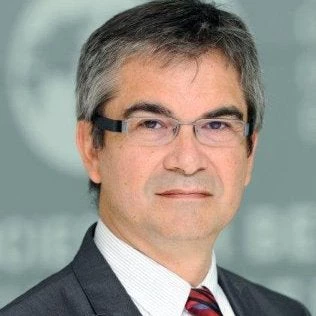
Last month I met with ministers and local officials in Addis Ababa to explore areas where we, at the World Bank, can help build institutional capability in Ethiopia. The trip was an enriching experience, both personally and professionally. It was gratifying to see first-hand the good work and commitment to development exhibited by our staff in the country.
We have had a decade-long engagement with Ethiopia with a successful track-record. Ethiopia has one of the largest World Bank portfolios in the Africa Region (US$6.1 billion in 2014) and the partnership is strong, with a robust future.
During my visit, I gave a lecture at Addis Ababa University on Public Investment Management before an audience of faculty, students, civil society organizations and donors. I shared with them how much public infrastructure investment has done for the country. Ethiopia has the third-largest public investment rate in the world and three times the average for Sub Saharan Africa.
This effort has contributed to growth that has averaged 10.9 percent since 2004—a figure higher than that of their neighbors or low-income countries on average. Infrastructure investment has also been helpful in expanding access to services and in gaining competitiveness, being a large landlocked country.
Some of the credit goes to sound management of key investments, particularly roads, which received on average 18 percent of total public investment over the past decade. The lack of roads was a major handicap to development of Ethiopia in the late 1990s. Between 1997 and 2014, the road network expanded by 275% and the share of roads in good condition rose from 22 to 70 percent.
Yet more work needs to be done. The infrastructure deficit remains substantial, despite a high public investment to GDP ratio over the past decade. And even in the roads sector there is evidence of cost and, especially, time overruns. To help Ethiopia – or any country – develop in a sustainable, smart way requires quality investments. This, in turn, demands a good system Public Investment Management (PIM) across all tiers of government.
With that in mind, the World Bank Group recently published a book, The Power of Public Investment Management, which provides a holistic framework for assessing the key stages of public investment. The book draws on a large sample of nearly 90 PIM diagnostics performed by the Bank in the last few years and features a synthesis of relevant experiences from over 30 countries.
The World Bank’s analytical framework is based on a number of “must haves” that any PIM system needs to develop to perform effectively, from project formulation to appraisal, procurement, operation and ex-post evaluation, with a greater focus on functionality rather than form, to adapt to the different institutional traditions of countries.
Drawing on that global knowledge, we stand ready to assist the governments such as Ethiopia’s with self-assessments of current systems for selecting and managing public investments. This includes helping policymakers develop systems aligned with their own budget, oversight and evaluation processes.
We are already leveraging our new Governance Global Practice structure to provide “tailor-made” technical assistance and support to establish a functional PIM system.
Part of this work can now be shared with the International Monetary Fund, which is drawing increasing attention to the importance of PIM to increase the effectiveness of public investment and raise the growth potential of countries and has even developed a diagnostic tool –PIMA—that focuses on the fiscal and administrative processes supporting public investment.
With the help of our country counterparts, we at the Governance Global Practice of the World Bank are not only developing partnerships with other international organizations, but also identifying synergies across areas of our own operational work that had been previously separated. So now we are prepared to link traditional public investment management with procurement and citizen engagement.
Our goal is to add value to the work of our clients across the whole investment cycle, where they may need it most.
Tweet this: Between 1997-2014, #Ethiopia's road network expanded by 275%.


Join the Conversation